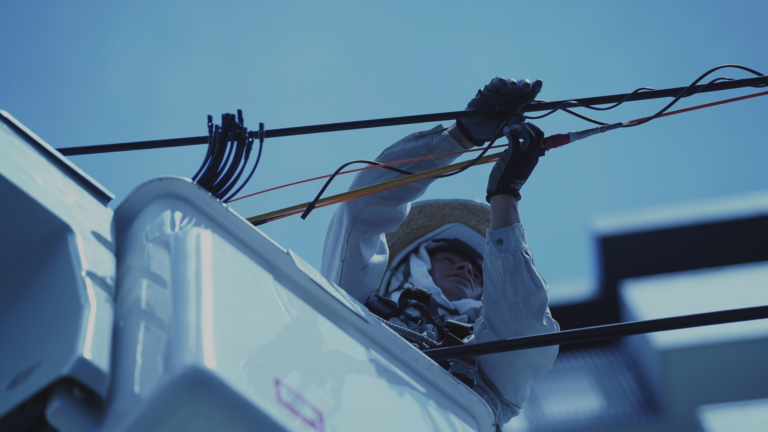NEPA Reform Under the SPEED Act Following House Approval
- Topics :
- Energy Funding
Reindustrialization or Regression? Evaluating DOE’s $625M for ‘Beautiful, Clean Coal’
Published October 6, 2025

The U.S. Department of Energy’s announcement of $625 million in new funding for coal and gas retrofits has sparked broad discussion across the energy sector. At a time when the United States is balancing decarbonization goals with industrial competitiveness, the initiative raises important questions about whether this funding represents strategic reindustrialization or a return to legacy energy dependencies. The program is framed as an investment in reliability and affordability, key concerns amid rising energy demand from emerging sectors such as artificial intelligence and advanced manufacturing. Yet, the initiative also tests the limits of the term “clean coal,” a phrase long associated with both innovation and controversy. The announcement, as first reported by Utility Dive, details specific allocations intended to modernize aging coal infrastructure while maintaining grid reliability.
Structure and Scale of the DOE Funding
The Department of Energy outlined a structured allocation totaling $625 million, targeting modernization and resilience within the coal sector. Approximately $350 million is designated for recommissioning or upgrading existing coal power units, while $175 million is allocated to projects designed to improve affordability and reliability in rural areas. Another $50 million supports wastewater management systems aimed at extending plant lifespans and improving operational efficiency. The remaining funds, $25 million each, are set aside for dual-firing retrofits and for the development of natural gas cofiring systems (Utility Dive, 2025).
This funding structure appears designed to preserve critical baseload capacity while addressing operational and environmental concerns. However, questions remain about the mechanism of disbursement, such as whether these funds will be distributed as grants, loans, or hybrid investments, and how performance criteria will be applied. The average U.S. coal plant today is more than four decades old, with declining efficiency and higher maintenance costs. In that context, retrofitting older infrastructure may temporarily enhance reliability but offers limited gains in emission reduction without concurrent investment in carbon management technologies.
Industrial Policy Framing: Energy, AI, and Reindustrialization
Energy Secretary Chris Wright emphasized the connection between secure, low-cost power and America’s broader reindustrialization agenda. Coal and gas are presented as foundations for supporting energy-intensive sectors such as AI computing, metals, and manufacturing. This framing reflects a wider debate in global energy policy on how to maintain economic competitiveness while transitioning toward net-zero carbon systems.
Data centers and advanced manufacturing hubs are projected to drive significant increases in electricity demand over the next decade. Policymakers face a difficult balance in ensuring reliability and price stability while meeting national emission reduction commitments. In this sense, the DOE initiative aligns with a pragmatic view of industrial policy, prioritizing energy security as a prerequisite for innovation-led growth.
The U.S. approach can be compared with that of other major economies. The European Union is channeling investment toward its Industrial Green Deal strategy, emphasizing clean hydrogen and renewable integration, while China continues to modernize its coal fleet alongside rapid renewable deployment. Both models demonstrate that modernization of existing assets and expansion of low-carbon capacity can proceed simultaneously, though the pace and emphasis differ.

Environmental and Economic Tensions
The central question is whether this funding will achieve meaningful emissions reductions or primarily extend the operational life of carbon-intensive infrastructure. Retrofitting coal plants can improve heat rates, reduce water use, and enhance efficiency, but these measures typically deliver incremental rather than transformative change. Without large-scale adoption of carbon capture and storage (CCS) or cofiring with lower-carbon fuels, total emissions from retrofitted plants will remain substantial.
Economically, the initiative may provide stability for regions dependent on coal generation and mining, preserving jobs and local tax bases. Advocates argue that maintaining a diverse generation portfolio is essential for grid resilience, particularly during peak demand events or supply disruptions. Critics, however, contend that continued investment in coal risks diverting capital from renewables and energy storage technologies that could offer longer-term sustainability and cost advantages.
The program’s wastewater and byproduct recovery components may yield tangible benefits in reducing environmental impact and improving plant economics. Yet, the overall emissions intensity of coal-fired generation remains significantly higher than that of natural gas or renewable sources. The policy outcome will likely depend on how effectively the DOE integrates emissions management requirements and whether additional incentives are introduced for technologies like CCS and advanced cofiring systems.
Conclusion
The Department of Energy’s $625 million initiative represents both an acknowledgment of coal’s continuing role in the U.S. power mix and a test of how modernization can coexist with climate objectives. The success of the program will hinge on its implementation, including whether funds drive efficiency improvements and technological innovation or merely extend the life of aging plants. As the United States pursues reindustrialization, the challenge is not simply to keep the lights on but to ensure that industrial resurgence is compatible with long-term sustainability and international climate commitments.
Reindustrialization and decarbonization need not be opposing forces. If modernization efforts integrate cleaner technologies, foster innovation, and strengthen energy resilience, they can contribute to both economic and environmental goals. However, transparency in funding structure, measurable emission targets, and accountability in project outcomes will determine whether this initiative signals progress or a pause in the nation’s transition toward a net-zero future.
References
- Utility Dive: DOE announces $625M for ‘beautiful, clean coal’ and gas
- U.S. Department of Energy: Office of Fossil Energy and Carbon Management
- International Energy Agency: Coal 2024
- U.S. Energy Information Administration: Electric Power Monthly
- America’s Power: Industry statements on coal reliability









